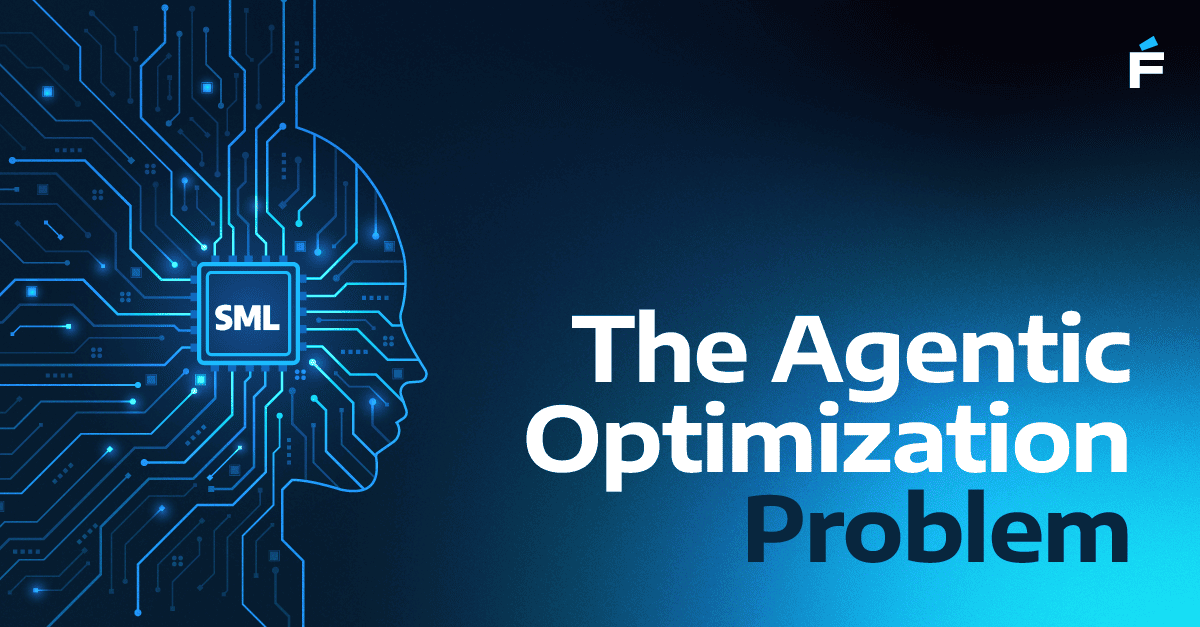Despite the challenges presented by ongoing global market fluctuations, enterprises continue to invest in software, with global spending striking as high as $856 billion U.S. in 2023. To understand how quality enterprise software is made, let’s start by understanding the different areas of software development life cycle models and phases, and how they can influence the speed and cost of delivery.
Software development models are basically a set of specific tools and approaches used during the project’s life cycle. Their objectives are to boost productivity while reducing operating costs, which means that the software development model you choose can often make or break your project. To avoid unexpected hiccups in the flow, let’s go through the components of the software development life cycle (SDLC) and how they can influence your choice of software development models.
What is Software Development Life Cycle?
The Software Development Life Cycle (SDLC) comprises all stages of software production — from analysis to deployment and support, and it will differ depending on the software engineering model you follow.
Software Development Phases
The SDLC can be broken down into several phases. Below is a simplified breakdown of these phases, which are present in most software engineering operating models:
- Planning (requirements analysis). During this phase, the software delivery and business teams collect information to outline the product’s business objectives. In managed IT services and outsourcing, the vendor gathers information from their client and other stakeholders. Afterward, the outsourcing vendor’s team creates a Software Requirements Specification (SRS) — a document that includes the objectives, goals, and system requirements for the product. This document should also document key agreements between stakeholders. The requirements-gathering process helps to align business objectives with the product being developed.
- Prototype design. During this stage, the software delivery team defines how the project will be developed and reflects this information in the Design Document Specification (DDS). This document covers the frameworks, platform specifications, limitations, and delivery estimates. Ideally, this documentation is made available to all parties involved in the development process (developers, testers, managers, and the client).
- Development (implementation). This is the core phase of all software process models, during which engineers develop the solution according to the requirements. This step involves a lot of code-writing and fine-tuning. Organizations should take note of the latest trends in software testing if they want to keep up with industry trends in this phase, as it changes frequently to keep pace with new development strategies.
- Quality assurance (QA) and testing. This phase consists of code reviews and module assessment. It’s a continuous process, especially for the Agile life cycle model, which we will discuss in further detail below. When people talk about testing, they usually refer to unit and integration testing. Unit testing verifies specific sections of the app to ensure it works as planned, while integration testing ensures that all modules work as one system. Mature product development practices will include testing into every facet of the development cycle to ensure higher QA standards in a practice called continuous testing.
- Delivery. Once engineers and testers are done with their work, the project manager, the client, and the stakeholders have to approve the project. After they do, it’s time for the product to hit the market.
- Maintenance. Many models include the post-deployment software development modeling phase. In fact, most applications require regular maintenance to remain relevant. This phase covers compatibility upgrades, performance optimization, and monitoring, as well as bug fixes.
Why following the SDLC process is important
Sticking to the SDLC process of your software development model will help you deliver the project on schedule and within budget. Here’s how:
- It helps the project stay on track. Two-thirds of software development projects exceed their budget. However, a robust SDLC methodology helps outline the objectives. Moreover, it will allow managers and clients to account for schedule shifts and expenses.
- It maximizes productivity. The application of development models like Agile or DevOps can help you achieve more with fewer resources. Research indicates that 59 percent of IT organizations experience a substantial productivity boost by adopting DevOps practices.
- It reduces development time. A flexible approach to the software design cycle helps teams cooperate more effectively. According to McKinsey’s research, selecting the right methodology can speed up the development process by up to six times.
- It provides better management. A defined SDLC will improve the collaboration between engineers, QA analysts, managers, and the client. If you want more control over your project, an accomplished managed services provider will map out the development with you and provide feedback throughout the software implementation lifecycle.
Learn more about the benefits of managed services for software development.
Now that we’ve covered everything you need to know about the SDLC, it’s time to finally dive into the advantages, disadvantages, and peculiarities of different software engineering models.
Types of SDLC models
Below are six of the most popular software engineering models, their advantages, and use cases.
1. The Iterative model

Iterative software process models begin with a smaller set of requirements. Developers use these requirements to analyze and gradually implement features. Afterward, these features are evaluated and tested to identify new requirements. This cycle is called an “iteration.”
This life cycle repeats numerous times, introducing new design choices, coding, and requirements changes.
Advantages:
- Coding begins early on
- A cost-effective way to implement requirement changes
- Streamlined management because the production is divided into smaller pieces (iterations)
- Bugs and defects are easy to spot at earlier SDLC phases
Disadvantages:
- Difficult to analyze risks
- Potential design and architecture issues in the later phases
- Too reliant on the baseline plan
- A resource-heavy model
Suitable for:
- Large-scale projects with multiple modules (such as web services or microservices)
- Projects with clearly defined objectives and tasks
2. The Agile model

Agile focuses on continuous release cycles and cross-functional development. It’s one of the most flexible and popular types of SDLC models. The driving factors for its recognition are the 27 percent cost reduction and productivity improvements, according to the CollabNet 2019 State of Agile Report.
Agile is quite similar to Iterative, where teams work in repeated increments. However, unlike Iterative, Agile doesn’t rely on the baseline plan. The plan, along with the requirements, is continuously modified throughout the life cycle.
The most popular sub-groups and techniques within Agile are:
- Scrum (developers work in iterations, aka “sprints” 2-3 weeks long)

- Kanban (emphasis on plan visualization and short daily “sprints”)

That said, this methodology doesn’t impose specific techniques. There’s no Agile development cycle diagram, so to speak. This means you’re free to experiment by merging it with other models if it fits you.
Advantages:
- Easy to change requirements and the baseline plan
- Fast release of the prototype
- Focus on communication between developers and the client
- Client’s engagement integrated into the life cycle
- Continuous evaluation and feedback
Disadvantages:
- Difficult to estimate the final production costs
- Possible architecture conflicts due to constant requirement changes
Suitable for:
- Large-scale and smaller projects
- Outsourcing and managed IT services
- Adding new features to a working prototype
3. The DevOps Model

DevOps is built around the principles of automation and collaboration. This model’s primary goal is to enhance cooperation between the operations team and developers (hence, its name) thanks to continuous feedback.
The model shares many similarities with Agile, but there’s one fundamental difference: DevOps focuses on interactions between the technical departments and managers. Agile, on the other hand, emphasizes direct client (or product owner) involvement.
Advantages:
- Automation and optimization of processes
- Continuous feedback cycle between engineers and testers
- Streamlined product delivery
- Significant productivity improvements for in-house departments
- Error and defect detection early on in SDLC
Disadvantages:
- Lack of focus on documentation
- Difficult to manage emerging product features
- A challenging adoption curve
Suitable for:
- Complex projects that require a lot of QA and testing
- Large teams with multiple departments
4. The Waterfall Model

Waterfall is one of the oldest types of software development life cycle methodologies. It focuses on a linear approach with SDLC phases following one another sequentially.
The outcome of each phase affects the input of the next one. Therefore, it’s much more difficult and costly to return to earlier phases.
Advantages:
- Straightforward and easily manageable
- Clearly defined deliverables and milestones
- Easy to prioritize tasks
Disadvantages:
- Lacks the versatility of the Iterative and Agile approaches
- Phases can’t overlap
- Time-consuming
- Too costly to return to prior phases
Suitable for:
- Smaller and mid-sized projects with clearly defined requirements
5. Verification and validation (V-shaped)

Verification and Validation is a sequential methodology, just like Waterfall. But there’s a difference — in this methodology, every step goes in parallel with testing.
For example, the first phase includes both planning and acceptance testing. Then come prototype design and unit testing, and so on. The coding stage is the final step of the V-shape model.
Advantages:
- Simple and straightforward
- Critical issues are taken care of during earlier phases
- In-depth requirements documentation
Disadvantages:
- Lack of flexibility
- Too costly and time-consuming
Suitable for:
- For mid-sized and large projects with explicit objectives and requirements
6. The Spiral model

Spiral combines the Iterative and Waterfall methodologies with an emphasis on risk assessment. It consists of the usual SDLC phases built on the baseline spiral.
Each cycle repeats in “spirals” that allow teams to evaluate risks and get precise estimates. The loop repeats until the product complies with requirements.
Advantages:
- Precisely documented
- Accurate time and budget estimates
- Excellent risk assessment
- Engineers can apply changes to new iterations
Disadvantages:
- Success depends on skilled risk managers
- Requires a large resource pool
- Time-consuming
Suitable for:
- Larger projects with complex requirements
- New products with multiple testing stages
The bottom line
If you’re serious about producing software solutions more efficiently, with fewer bugs, and within budget, you should follow proven methodologies or software development models. But before selecting one, make sure to learn all about their pros and cons to discover the methodology that will fit your project best.




